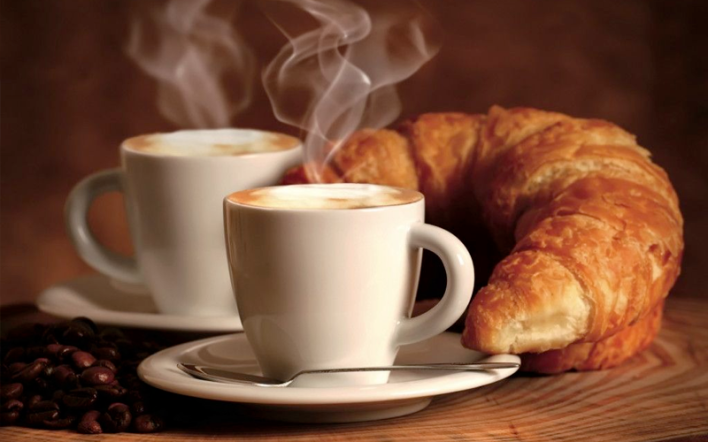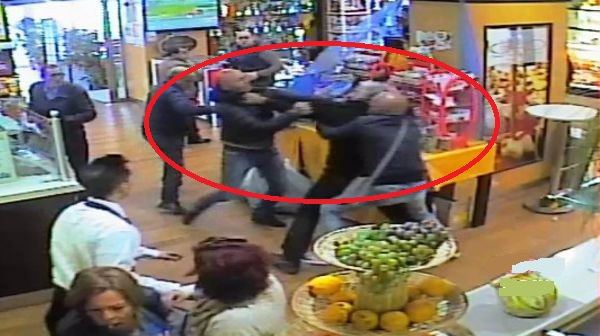At The Bar In Italy Posted by Serena on Aug 10, 2016 in Culture, Italian Language
The bar is an essential institution in Italy. A meeting place, somewhere to pass the time of day, to top up your caffeine levels or the credit on your cellulare. At the bar you can read the provided daily paper, play lotto, buy cigarettes, fare la colazione (have breakfast), una merenda (a snack) or, in the late afternoon, un aperitivo.
But don’t confuse the Italian bar with the English/American bar. The Italian bar has little to do with the alcohol based pub bar, being much closer in nature to a snack bar cum coffee shop with extras. Not surprisingly, il caffè is likely the most frequently consumed product in the typical Italian bar.
The setting: a bar in the main piazza of a small town in Italy
The characters: a group of friends
The time: Late afternoon, the period when many people are ready for their aperitivo: a nice glass of Prosecco, an Aperol Spritz, or perhaps a non alcoholic drink, such as ‘un Crodino analcolico‘. Drinks are usually accompanied by salatini (salty snacks), such as patatine (crisps), noccioline (nuts), olive verdi denocciolate (stoned green olives), focaccia, and so on.
But not all Italians feel obliged to have the archetypal aperitivo in the afternoon, as is the case in the following short dialogue.
Barista: “Buongiorno! Desiderate?”
Barman: “Good day! What would you like?”
Serena: “Possiamo sederci fuori?”
Serena: “Can we sit outside?”
Barista: “Prego, accomodatevi! Arrivo tra un attimo”
Barman: “Please, take a seat! I’ll be there in a moment”
Il gruppo si sistema intorno a un tavolino all’ombra fuori nella piazza da cui si può ammirare la silhouette della torre campanaria nitida contro il cielo azzurro. Dopo qualche minuto arriva il barista a prendere le ordinazioni.
The group settles around a table in the shade outside in the piazza from which it’s possible to admire the silhouette of the bell tower, neatly outlined against the blue sky. A few minutes later the barman arrives to take the orders.
Geoff: “Per me un cappuccino decaffeinato, e poi una pasta … cosa c’avete?”
Geoff: “I’ll have a decaffeinated cappuccino, and a pastry … what do you have?”
Barista: “Pasta ripiena alla crema, al riso, alla marmellata, cornetto integrale vuoto, pasta alle mele, bombolone …”
Barman: “Pastry filled with custard, with rice, with jam, empty wholemeal croissant, pastry with apples, doughnuts …”
Geoff: “Va bene una pasta alle mele”
Geoff: “An apple pastry is fine”
Serena: “Per me un cornetto integrale vuoto e un caffè al ginseng”
Serena: “I’ll have an empty wholemeal croissant and a ginseng coffee”
Donatella: “Si può avere un latte freddo?”
Donatella: “Is it possible to have cold milk?”
Barista: “Senz’altro!”
Barman: “Of course”
Donatella: “Allora, un latte freddo con una spolverata di cacao”
Donatella: “So, cold milk with a dusting of cocoa”
Lorenzo, il figlio dodicenne di Donatella: “Fate il frappè?”
Lorenzo, Donatella’s 12 years old son: “Do you make milk shake?”
Barista: “Certamente. Che gusto?”
Barman: “Certainly. What flavour?”
Lorenzo: “Frappè con gelato alla banana”
Lorenzo: “Milk shake with banana ice cream”
Barista: “Il gelato alla banana non ce l’ho, però te lo posso fare con lo yogurt alla banana”
Barman: “I don’t have banana ice cream, but I can make it with banana yoghurt”
Lorenzo: “Va bene!”
Lorenzo: “That’s fine!”
Arriva il barista con le ordinazioni: “Il cappuccino deca … il ginseng … il latte freddo … frappè con yogurt alla banana … le paste. Va bene così?”
The barman arrives with the orders: Decaffeinated coffee … ginseng … cold milk … the banana yoghurt shake … pastries. Is everything okay?”
Vari membri del gruppetto: “Sì, grazie … perfetto”
Several members of the small group: “Yes, thank you … perfect”
Il latte freddo è, come previsto, un grande bicchiere di latte fresco intero freddo con una spolverata di cacao, su richiesta di Donatella.
The cold milk is, as expected, a big glass of cold, fresh whole milk, with a dusting of cocoa on the top, as requested by Donatella.
Intanto Lorenzo assaggia il suo yogurt alla banana e sembra soddisfatto.
In the meantime Lorenzo tries his banana yoghurt shake and seems satisfied.
Donatella, incuriosita: “Com’è?”
Donatella, curious: “What’s it like?”
Lorenzo: “Molto buono!”
Lorenzo: “Very good!”
Donatella: “Fammelo assaggiare” … dopo una sorsata esclama sorpresa: “Mm, buono veramente!”
Donatella: “Let me try it” … after a sip she says in a surprised way: “Mm, really good!”
Dopo parecchie chiacchiere (quasi due ore) è ora di pagare, e cominciano le solite discussioni: “Pago io … No, lascia stare, pago io … No, guarda che mi offendo …” e così via, finché Donatella non si alza decisa e va dentro al bar a pagare il conto.
After a lot of chatting (nearly two hours) it’s time to pay, and the usual discussions start: “I’ll pay … No, leave it, I’ll pay … No, I’ll get offended …” and so on, until Donatella gets up decisively and walks into the bar to pay the bill.

Build vocabulary, practice pronunciation, and more with Transparent Language Online. Available anytime, anywhere, on any device.






Comments:
Dr. Jose Torres:
Quite interesting article, as usual. I have a question regarding the last paragraph, i.e. “….Donnatella non si alza decisa…”, is the “non” really necessary, or can it be omitted”?
tony:
@Dr. Jose Torres I believe that the ‘non’ combines with the preceding ‘finché’ in order to mean ‘until’, so it is necessary in this case. So:
finché… = while
finché non… = until
Se non sbaglio! 🙂
Geoff:
@tony Bravo Tony, e grazie per l’aiuto!
A presto, Geoff 🙂
Ute:
A nice text. May I point out that it is “silhouette della torre” (and not “del torre”)?
I don’t know where you got this example from, but usually italians wouldn’t drink a cappuccino after 12 o’clock. It would rather be a caffè etc.
And if I may answer Dr. Jose Torres question: “Finché non” means ‘until the moment in which…’ and you can translate it with ‘until’. The particella negativa ‘non’ in this context is a “false negative” and is not translated.
“finché” means ‘as long as’/ ‘while’, whereas “finché non” means ‘until’.
Serena:
@Ute Salve Ute! Thank you for pointing out my typo. I apologize, but due to internet problems I had to work at an internet-caffè (while sipping my cappuccino), whit the TV on full volume showing the Olympic Games, and the barman and customers commenting on them. Not a very comfortable environment!
As for drinking cappuccino after 12 o’clock, well I got this example from living in Italy. My husband Geoff and I often have a cappuccino in the afternoon, but we are not the only ones, especially in the middle of the afternoon, when people have a ‘merenda’ (afternoon snack), which for many people is like another breakfast.
Well done for finché and finché non.
Saluti da Serena
Jack (Gia?):
I am confused. The times we visited Italy/Sicily we paid before getting our coffee and pastries. We presented our receipt and got our refreshments. Is this a different type of bar?
Geoff:
@Jack (Gia?) Salve Jack, in most local bars you pay at the end. However, in some bars, especially those that have a lot of tourists, or in the service areas on the autostrada you pay exactly as you describe, before you get what you’ve ordered.
Saluti da Geoff 🙂
jane bowden:
‘…finché Donatella non si alza decisa…’ why is there a ‘non’ in this phrase?